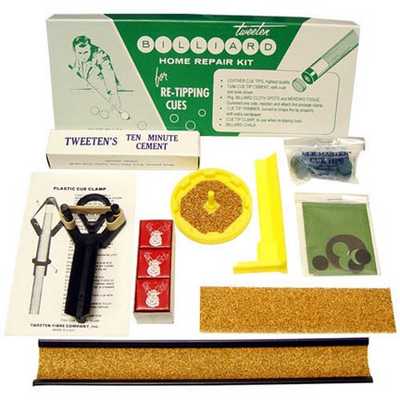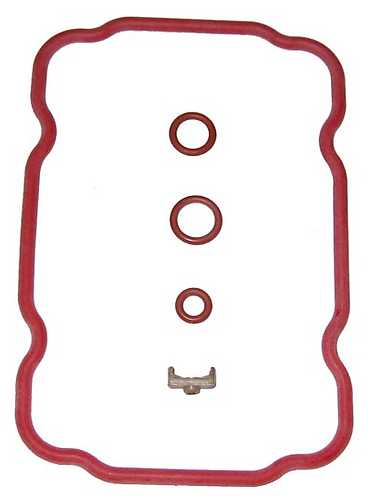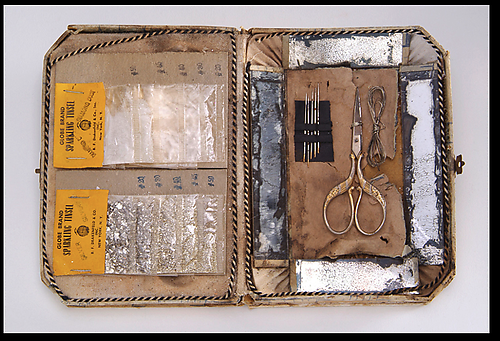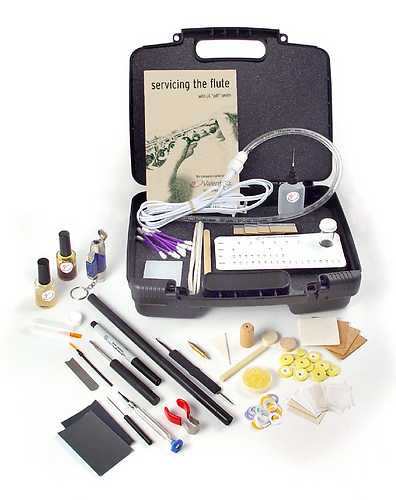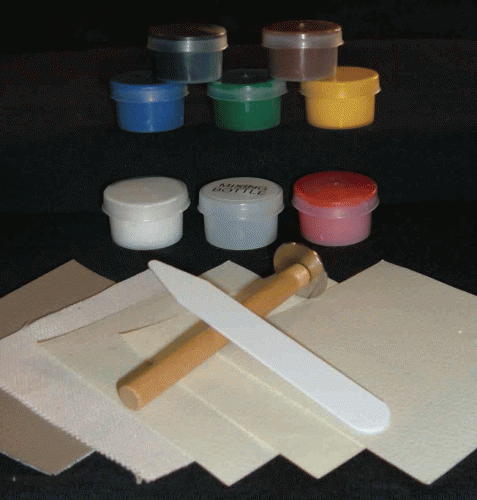sharing thoughts
sharing thoughts
Comments on the Repair Manifesto
Stop recycling, start repairing proves a statement many people agree with or want to comment on. Big international blogs are writing about the Repair Manifesto and many readers share their opinions in the comments section.
Frustrations, personal repair success stories, additions and suggestions how things can be done better; below you read a selection of comments we found on the internet.
Want to share your thoughts? Send an e-mail to info@platform21.com
Posted by Joachim Baan on Anothersomthing.org
An interesting manifesto by Amsterdam based Platform21 on repairing. It is interesting, but I think we need to ask ourselves one question at first. If we can buy something which is cheaper than the high quality products, are we still willing to repair it? And is it worth repairing when it is more expensive than buy a new one?
So the basic question is, are we, especially in times of crisis, going to spend more €’s on high quality, and then, after years of intens usage, going to repair it; or are we keep buying the cheap stuff and replace it every time it breaks? I’d rather prefer the first option…
www.anothersomething.org/2009/04/repair/
Western businesses and governments have staked everything on innovation, the antithesis of repair. It's the rationale behind sending everyone to university and encouraging the creative economy.
positiveparty.blogspot.com/2009/03/repair-manifesto.html
One thing that, while implied, I don't think was explicitly stated in the Manifesto - repair other peoples' stuff too.
densaer.livejournal.com/833679.html
Part of their idea is to buy things you know you will be able to repair. Which reminds me of how easy it was to work on that 1965 Ford pickup I used to drive when I was in high school. Sure the lack of power steering gave me arms like Wolverine but under the hood was this playschool-like engine with big exposed parts that made sense.
If you’re new to repairing, it’s probably a little intimidating to tear things apart. But remember this: if you’re throwing it away anyway, it won’t hurt to take it apart, will it?
tamethebear.tv/ticker/2009/03/diy-repair-vs-throwing-away-and-buying-new/
I think it is especially during this economic times that product designers should be looking at making products that are not only affordable, but also 'repairable'. Because it is interesting to note that as the pace of technological developments quickens, the consumers can't help but feel the pressure of replacing their outdated products more often out of a sheer need for being up-to-date, rather than out of necessity.
designerunlimited.blogspot.com/2009/03/repair-manifesto.html
Posted by SILKOX on BOING BOING
A couple of years ago I was trying to figure out how to fix an old stand-up floor lamp. For fun, I looked up one of the patent numbers and was surprised to learn that its irreparability was the subject of the patent! The thing was designed not to be field-disassemblable. I looked around a bit more, and found that that "feature" was a common subject of patents. The patent I started with was from the '40s, I think.
www.boingboing.net/2009/03/03/repair-manifesto.html
Posted by Ronald on www.leefinaandacht.nl
Mooi hè? Ik zou er nog wel 1 punt aan toe willen voegen:
Repareren is oefenen.
Dingen gaan vaak onverwacht kapot. Kun je de tijd nemen om ze te repareren? Misschien kost een nieuwe kopen minder tijd en kun je sneller verder gaan met je drukke leven. Probeer het eens te zien als een oefening in accepteren, flexibiliteit en creativiteit, en niet als een tegenslag (of erger nog: als complot...).
Posted by BRAINSPORE on BOING BOING
The obvious problem is that there is no financial motivation for most manufacturers to make their products repairable. It often costs more to make something that can come apart, and the "payoff" is that they get to sell fewer products.
www.boingboing.net/2009/03/03/repair-manifesto.html
Posted by BEELZEBUDDY on BOING BOING
This design philosophy is entirely at odds with the current greenie movement, whose general pitch is "everything you use or own kills the earth and eats puppies. Trash it and buy new stuff with friendly green stickers." Apple would not approve of this manifesto.
www.boingboing.net/2009/03/03/repair-manifesto.html
Posted by ITO KAGEHISA on BOING BOING
The table saw buzzed briefly and lazy curls of smoke began to rise from the large exposed motor. The blade did not turn. I toggled it off again and yanked the plug from the wall as fast as I could.
I was flying about, fixing things for people with money, and when I had moments I tried to look up a replacement motor... and I could not find one. Anywhere!
I found a scan of the manual, though, from 1965 when the saw was built.
The manual showed that the motor was not considered to be a part. The armature, the brushes, the bolts, and other pieces of the motor were all parts. The motor was not.
Apparently in 1959, when the motor was designed, a table saw motor was intended to be repaired - rewound, if necessary, but not ever replaced. The motor design was so successful they were still using it throughout the 1960s.
So I took the motor apart late one night. Mud dauber wasps had flown into the ventilation slots, and in a matter of a week or so had filled all the empty spaces in the motor with mud, wasp grubs, and paralyzed spiders.
I gave the spiders and grubs to little fish in the stream behind the house, and carefully washed out the mud, and reassembled the motor. The saw works fine now.
www.boingboing.net/2009/03/03/repair-manifesto.html
Posted by THEMARK on BOING BOING
Line #2 puts the onus on product designers to make things come apart. Well, that would be just great if that were our decision. Huge corporations don't usually give us that much control. We're usually designing with whatever specs they give us.
ww.boingboing.net/2009/03/03/repair-manifesto.html
Posted by PIERS W
Maybe I'm a bit obtuse today but why not throw away the broken bit? What else am I supposed to do with it?
Posted by ORNITH on BOING BOING
Here's an idea: learn to do basic sewing. By which I mean hem a pair of pants, mend a ripped seam, and sew on a button or a patch. Takes nothing but a spool of thread, a needle, and a small pair of scissors, maybe a little scrap of fabric or a button, and you can learn all that in and hour or two.
Clothing is already made repairable- it comes with spare buttons all the time. And unlike many of these other things people are talking about, it doesn't take a workshop or tons of skill to do the repair. I don't care if a lamp is repairable if it takes an electrician's certificate and a soldering tool and a ventilated workshop space to do the repair - it might as well be one solid piece to me and most other people, too.
www.boingboing.net/2009/03/03/repair-manifesto.html
Posted by MARK_P_S_2 on BOING BOING
RE:"Manufacturers wouldn't make junk if so many people didn't buy it."
When the first TV, first VCR, first DVD players came out they were expensive. If they broke, they were fixed.
Today with mass production they are cheap to buy and made as cheap as possible.
It's junk because the manufacturer needs to makes as much profit as possible.
A lot of this "green" movement is a form of planned obsolences. Buy a new fridge to save energy! Buy a new washer-dryer to save energy!
The new has just as much planned obsolences as the old.
www.boingboing.net/2009/03/03/repair-manifesto.html
Posted by HADLOCK on BOING BOING
Most items - yes even the cheap ones - are usually user-repairable. Plastic is difficult to repair, since it's brittle and doesn't paint or glue easily, but with epoxy and properly clamped you can at least make an item usable again until you can find a suitable replacement. The problem with user repairable items is that typically you need to find a version that is made of metal or wood, or both - repairable and paintable materials. These tend to cost 10x as much and aren't easily found at walmart.
www.boingboing.net/2009/03/03/repair-manifesto.html
Posted by ICELANDER on Treehugger
The problem with repairing many electronics is that if you have amateurs digging around inside the guts of a machine, you have to make everything in there more rugged. One stray electrical discharge or bump of a hand can render a circuit board dead.
So while this might make sense for things like clothes or shoes, it's going to be a huge step back for electronics. If my iPhone were repairable it would be the size of a desktop computer.
www.treehugger.com/files/2009/03/repair-manifesto.php
Posted by Aaron Dalton on Treehugger
Of course, the challenge for manufacturers who have built their business models around planned obscolesence is how to make money if people start repairing things.... Maybe one way is to keep products complex but sell repair services for less than the cost of a new product and make it clear that the repair service will also upgrade the product into something cooler and better than before?
It's an interesting challenge, but there is certainly a demand for high-quality products that last.
www.treehugger.com/files/2009/03/repair-manifesto.php
Posted on Fizzogblog
In a country like Ghana, repair shops abound.
But not here in the UK. It's not 'cool' to repair things here. It's almost a sign of 'making do'. It seems as if a hallmark of our wealth and our superiority is the ability to throw away and to replace.
For Platform21's set of ideas to work in the present retail environment, it may require the consumer to spend more in the first instance, in order to avoid built-in obsolescence. Or to expend time and energy in learning how to fix things. Or it needs a sub-culture to develop, in which, if you can't fix something, you know someone who can. And that requires at least three things... time, vision and community.
... We need to learn to share and support each other better in local communities, so that know-how can be transmitted from one person to another.
fizzogblog.typepad.com/fizzogblog/page/2/
Posted by JAKLUMEN on jaklumen.vox.com
Ok, so I guess I'm handy? Following the Repair Manifesto, I wanted to share a little success story repairing something.
Our hand mixer stopped working. It was a hand-me-down from my side of the family, and Cimmorene loved it because she had another set of beaters (I think it they were for a cheap hand mixer that fell apart) that she liked and that fit. Well I mentioned it to my mother, since I thought I was going to have to throw it out, and she mentioned that my paternal grandfather had taken apart her Sunbeam Mixmaster when it stopped working, blew out the dust, put it back together, and it worked again. So I thought, "I bet I could do the same thing with this hand mixer" and today I did just that.
It's an old General Electric in an awful shade of green that apparently was popular after WWII, but when I took it apart, I could see that it was good, solid construction. I figured the gears turning the beaters were the problem, and so I sprayed it with a little lubricant. I finally decided to take the gear assembly apart, and as I popped out the gears, I could see there was peanut butter in them, mostly underneath the gear shaft. So after I got all that gunk cleared out and put it back together again, it worked perfectly.
jaklumen.vox.com/
Posted by Dave Gustafson on Unpressable Buttons
Ah, so true. Designers would love to package everything neatly for the consumer and keep all the magic hidden inside the "black box." But it's hubristic to think that your design is perfect or that your product will never break. Designing to allow repair can give the product a longer life with the user, and the positive experience of an easy repair may overshadow any negative experience of the damage that required it. Happier users, less waste - something to think about!
www.unpressablebuttons.com/2009/03/repair-ready-design.html
Posted by drumz on the Huffington post
Sometimes it costs more to repair something than it is to buy a new one.
I'm a Mr Fixit and things have slowly moved to the point where somethings they can't be fixed or it's too expensive to fix it. I hate cheap crap and spend more so that I get good quality because I always stand by the old adage that you get what you pay for.
www.huffingtonpost.com/2009/03/04/repair-manifesto-discoura_n_171714.html
Posted by Aaron Britt for DWELL
Designers talk a lot about extending product lifecycles, but most often in terms of creating new objects with exceptional longevity. Extending the lifecycle of existing objects is a different proposition—it requires a proactive user. But it's absolutely possible to give tired goods a new lease on life, and Dutch design collective Platform 21 believes it's an imperative.
www.dwell.com/blogs/platform-21-repair-manifesto.html
Posted by Jennifer Hattam for Treehugger
... One of the things I love about Turkey is how readily, and cheaply, it seems you can get almost anything repaired. But just as Americans and Europeans are starting to (re-)warm to the idea of fixing things up, the spread of throwaway culture to Turkey is threatening repairmen's livelihoods.
The Dutch design group Platform 21 recently issued a "Repair Manifesto" … "a mentality, culture and practice that not so long ago was completely integrated in life and the way we designed it." Though that mentality has largely faded into the past in the United States (and, presumably, in the Netherlands), the small streets of Istanbul are full of people who can fix the busted toe of your boot, mend a thrashed messenger bag, and tinker your electronics and appliances back to health.
But the local newspaper Today's Zaman reports that small repair shops are closing down, warning that the "revered Turkish profession of repair work... is about to disappear." The culprits are the same as they are anywhere else: ever-cheaper products on the market and a mentality that favors replacement over repair.
An organization of Turkish radio and television repairmen that has seen its numbers drop by 75 percent is trying to encourage members to learn to fix newer technologies like alarm-security systems, but with little success. They may have the same fatalistic feeling as İsmail Boran, a shoe repairman interviewed for the article who says he expects his business to dry up completely. 'When people buy shoes for TL 10 [about $6], they really don’t feel the need to repair them," he told the paper. "They just spend a little bit more and actually get a new pair."
www.treehugger.com/files/2009/03/twilight-of-the-turkish-repairman.php
Posted by Matthew Rochte,
Sustainability Consultant
Some of the best innovation comes from the process of repairing products. When I ran a manufacturing line, the process of repairing led to insights in product design, usefulness, and improvement. We discovered where the real wear and tear in the system was thus allowing us to upgrade future generations of the product. In some cases this allowed us to reduce our costs in subsequent generations as we learned what could be trimmed and what needed reinforcing.
www.opportunitysustainability.com/
Posted by Elizabeth
I love fixing things. Yesterday I patched a pair of pants that now has 8 patches (including a patch over a patch) and soon will be in need of more. Granted, they’re only going to be work clothes, but now they have personality and I don’t have to downgrade a nicer pair of jeans. Apparently I’m right in step with this awesome Repair Manifesto.
www.queercents.com/2009/03/07/queercents-weekly-roundup-daylight- saving-tomorrow/
Posted by The succulent wife.com
Hooray for the Repair Manifesto!
Remember when our parents used to bring the television or the toaster to the repair shop? Wow, that’s ancient history.
This Repair Manifesto is particularly charming because it will be evolving with the feedback, ideas and comments of contributors (like you & me). Mine is “Repair is about cherishing”.
www.thesucculentwife.com/get-it-fixed-hooray-for-the-repair-manifesto/
